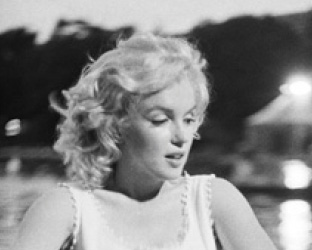By Georgette Gouveia
For sheer voluptuousness, it’s hard to beat Indian art. Curvaceous goddesses and temple celebrants, sensuous queens, strapping gods, ripped bodhisattvas: They permeate the subcontinent and haunt the artistic imagination.
And they did so right from the beginning, says John Guy, the Florence and Herbert Irving curator of the arts of South and Southeast Asia at The Metropolitan Museum of Art in Manhattan.
“The earliest religion in India is Brahmanical. It goes back to the oral tradition of the Vedas (sacred texts).”
From this tradition Hinduism emerged, as did the reform movements of Buddhism and Jainism. The latter two – which are to Hinduism what Lutheranism and Calvinism are to Roman Catholicism – emphasized the pure and the puritanical. But the sensuousness of the body would not be denied.
The love of the voluptuous female and the commanding male is endemic to human nature, Guy says, and it is particularly endemic to Indian art.
He points to the terra-cotta relief “Goddess and Attendants,” which dates from between the first century B.C. and A.D. first century. It’s a female nude who makes up for what she lacks in clothing with accoutrement. Her attendants carry an umbrella – symbol of her divinity – to shade and shield her. Garlands announce and celebrate her. The figure establishes the feminine archetype in Indian art, with one hip cocked to emphasis her hourglass shape.
The earliest figures were female, possibly because they were created by men but more likely because they were fertility symbols. As we tour the Florence and Herbert Irving Galleries in the Arts of South and Southeast Asia wing, Guy stops before a red sandstone “Tree-Spirit Deity” (first century). Once part of a temple decoration, she still calls forth life, shaking a tree to yield fruit like the mango she holds. But it’s as if she were also part of the tree itself, her breasts as ripe as any mango. Guy notes how one hand is placed on her cocked hip, emphasizing its roundness.
So pervasive was this sensuousness that it crept into more ascetic religious traditions like Buddhism. A bronze “Standing Buddha” from the classical period of Indian art (fifth through seventh centuries) illustrates the “wet” drapery effect, the undulating lines of the Buddha’s robe stretched taut, revealing more than it conceals. Clearly, America’s wet T-shirt contests have nothing on Indian art.
Yet it is perhaps in the Hindu bronzes of the Chola dynasty (10th century) that voluptuousness reached perfection. We stand in awe before “Standing Parvati,” one of The Met’s masterpieces. Such works were often commissioned by royalty, Guy says, and so they were part portraiture, part image of the divine.
Parvati, wife of the god Shiva, smiles at us, her weight shifted to one leg to show off her curvy yet graceful figure.
Her voluptuousness, however, is as much a condition of the artist’s line as it is of her body. The articulation of each curl that caresses her neck, the incisiveness of her accessories, the sway of her clinging drapery give texture and life to this copper alloy. No wonder Auguste Rodin – no slouch when it came to erotic sculptures – would write in 1910 of the superiority of Chola bronzes.
Perhaps he also drew inspiration for his frankly carnal works from pieces like “Loving Couple,” a 13th-century sculpture made of Ferruginous stone. As the woman throws one leg across the man’s groin, he tenderly supports her with a hand on her thigh and one behind her head. Their smiling lips meet, leaving little doubt to the denouement. (India is, after all, the country that put the sutra in “The Kama Sutra.”)
“Loving Couple” also reminds us that sensuality wasn’t limited to the female figure. It does indeed take two to tango. Indian art boasts any number of heroic male figures. Among the most arresting is the “Torso of a Monumental Bodhisattva,” a Buddhist saint, from Pakistan’s Gandara region (circa fifth century B.C.). This magnificent, rippling torso suggests the region’s Greco-Roman influences as well.
There are also chubby, mischievous nature spirits – the garden gnomes of ancient Indian art, Guy says – shriveled embodiments of evil and skeletal fasting Buddhas that reflect the challenges the flesh is heir to.
But it is to the bodacious goddesses and their ripped paramours that the eye returns in the end. They are, Guy says, “really a celebration of the human form.”
For more, call (212) 535-7710 or visit metmuseum.org.


